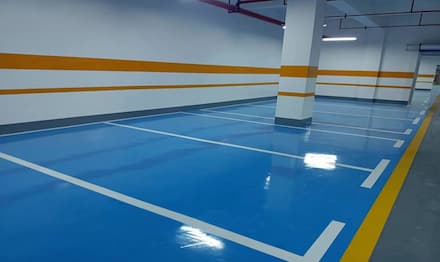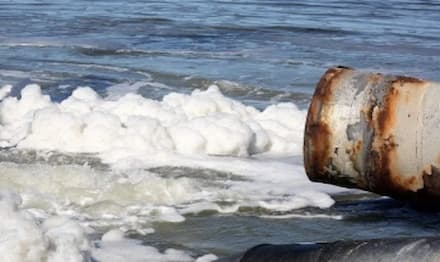What is a 3PL?
Third-party logistics (3PL) refers to outsourcing parts of a company’s supply chain and shipping operations to external specialists. In practice, a 3PL provider handles functions like transportation, warehousing, and distribution on behalf of shippers. For example, Wikipedia defines 3PL as “an organization’s long-term commitment of outsourcing its distribution services to third-party logistics businesses”. In other words, a business can partner with a 3PL shipping firm to manage freight and logistics instead of doing everything in-house. 3PL providers typically operate integrated networks of freight and warehousing assets; they use these to scale and customize services to customers’ needs. In practical terms, engaging a 3PL means you can focus on your core business while a specialist handles inventory, transportation, and fulfillment. Common services include freight forwarding (by road, rail, air, or sea), inventory management, order fulfillment, customs clearance, and even value-added tasks like packaging and labeling. Because 3PLs coordinate all these logistics activities, they are often described as “one-stop” shipping partners or shipping services providers.

Growth and Market Size of 3PL
The 3PL industry has grown rapidly as global trade and e‑commerce expand. For example, one market report notes that the global 3PL market reached over $1.17 trillion in 2023. Leading analysts project this will climb to about $1.4 trillion by 2025 and continue growing at roughly 8–10% annually thereafter. The continued boom of online retail is a major driver: roughly one-third of 3PL shipments today serve the retail and e-commerce sector. Regionally, Armstrong & Associates data show the U.S. 3PL industry at around $299.5 billion in 2023, while Asia-Pacific (including China) was about $443.6 billion. Even emerging markets see strong growth: for example, analysts estimate Russia’s 3PL market in the mid‐2020s in the tens of billions of dollars, fueled by rising e-commerce demand (see our article on Russia’s top e-commerce platforms for details). All told, projections indicate global 3PL revenues near $1.5–1.9 trillion by 2030. This growth underscores how vital outsourced logistics has become. Companies of all sizes increasingly rely on 3PL shipping partners to reach new markets efficiently and scale without heavy capital investment. As the data show, global logistics costs (about 10–11% of world GDP) are enormous, and 3PL providers capture roughly 10–12% of that spending by adding efficiency and technology.
How 3PL Warehouses Operate
A key component of 3PL shipping is the warehouse network. A 3PL warehouse acts as a flexible fulfillment hub for multiple clients. Instead of businesses owning and managing their storage facilities, they outsource inventory handling and order fulfillment to a 3PL partner. Modern 3PL warehouses are highly automated and tech-driven. They use warehouse management systems (WMS) to track inventory in real time, optimize storage space, and speed up operations. Because the infrastructure is shared among clients, 3PLs achieve economies of scale. One industry expert notes that “a 3PL warehouse operates on a pay-as-you-go model, so you only pay for the space and services you use”. This means retailers avoid fixed costs like rent and salaries, and can expand or contract with demand.
-
Inbound Logistics: 3PL warehouses receive goods from manufacturers or import shipments. They inspect, label, and enter items into inventory.
-
Storage & Inventory: Products are stored in racked shelving or bulk areas. Inventory levels are tracked digitally, allowing clients to see stock status via online portals.
-
Order Fulfillment: When sales orders come in, the 3PL picks and packs the items. Modern 3PLs optimize picking routes and use automation to improve speed and accuracy.
-
Outbound Shipping: The 3PL arranges transportation, whether by truck, rail, air, or sea, to send orders to customers or retailers. They generate bills of lading, manage carrier routing, and can even label parcels for e‑commerce.
-
Value-Added Services: Many 3PLs offer extra services like light assembly (kitting), re-packaging, reverse logistics (handling returns), and quality inspections.

By operating these functions under one roof, 3PL warehouses become the backbone of an outsourced supply chain. This integration with shipping services means faster delivery: goods can move from receipt to customer without delays. In short, a 3PL warehouse provides a scalable, cost-efficient platform for fulfilling orders. Companies gain access to advanced technology (barcode scanners, automation, tracking) without having to build it themselves.
Services Provided by 3PL Companies
Third-party logistics companies offer a wide range of shipping services. At the basic level, they manage transportation and freight forwarding — moving goods by road, rail, air, or sea. A 3PL might book container shipping from China to Europe, schedule trucks via the TIR system across Eurasia, or charter air cargo for urgent deliveries. Many 3PLs advertise multimodal transport solutions that combine sea, rail, road, and even air into one route. This flexibility lets shippers optimize for cost, speed, or reliability as needed.
Key services of a 3PL provider include:
-
Transportation Management: Coordinating the physical movement of goods. This includes booking carriers, route planning, and tracking shipments in real time. Third parties often negotiate better freight rates due to volume and expertise. They handle the paperwork (bills of lading, customs docs, etc.) so cargo can cross borders smoothly.
-
Warehousing & Fulfillment: As discussed above, 3PLs store inventory in their facilities and process orders. They pick, pack, and label goods for delivery. Many 3PLs operate specialized fulfillment lines for e‑commerce, direct-to-consumer B2C orders, or B2B bulk orders. They can run value-added operations like kitting or special packaging.
-
Inventory Management: 3PLs maintain accurate stock records for clients. They alert companies when stock runs low and can handle replenishment orders. This ensures businesses don’t overstock or run out of products. In fact, “3PL companies provide services including inventory management, warehousing, and fulfillment”, allowing e-commerce merchants and manufacturers to scale without managing these processes themselves.
-
Customs and Trade Compliance: International shipping requires customs clearance in each country. A good 3PL handles import/export customs forms, duties, taxes, and regulatory filings. They keep up with trade regulations so shippers don’t face delays or fines.
-
Specialized Freight: 3PLs often manage the transport of specialized goods. For example, they may have temperature-controlled (cold chain) trucks and warehouses for food or pharma, or equipment for hazardous materials. They also arrange specialized carriers, like full truckloads (FTL) and less-than-truckload (LTL), to suit cargo size.
-
Transportation Technology: Top 3PLs provide clients with tech tools. This can include shipment tracking portals, automated notifications, and analytics on transit times. By integrating digitally, they offer supply chain visibility. For instance, many 3PLs offer real-time tracking and alerts, which improve customer experience.

In short, a third-party logistics provider can be thought of as an extension of a company’s shipping department. As one source explains, 3PLs “store and manage inventory and fulfill orders,” and “provide transportation services, managing the movement of inventory” and coordinating shipments. They may even advise on packaging for better space use or help optimize delivery routes. Because of this broad service scope, partnering with a 3PL consolidates many shipping services under one roof. Businesses pay a single provider to integrate transport, warehousing, and fulfillment, often resulting in faster delivery and lower overall cost.
Do You Need a 3PL Provider?
Deciding whether your business needs a 3PL involves evaluating your logistics challenges. Common signs that you could benefit from outsourcing include:
-
Rapid Order Volume: If your sales are growing quickly and in‑house logistics can’t keep pace, a 3PL can scale operations. For example, Amazon notes that companies facing trouble handling order volume or struggling to meet delivery promises often turn to 3PLs. Without a partner, you may lack the space, systems, or staff to fulfill orders efficiently.
-
Demand for Faster Shipping: Customers today expect quick, reliable delivery. If you need to offer expedited or guaranteed shipping but don’t want to invest in a nationwide warehouse network or a large fleet, a 3PL can help. A logistics expert observes that using a 3PL allows a business to “offer expedited shipping, make accurate delivery promises, and ensure fast, reliable fulfillment” to improve customer experience.
-
High Overhead Costs: Warehouses, trucks, forklifts, and logistics personnel require a heavy investment. A 3PL eliminates much of this capital expense. By engaging a 3PL, you “free up working capital” since the 3PL owns the trucks and warehouses. For companies looking to cut fixed costs in shipping and storage, a 3PL’s pay-per-use model is very attractive.
-
Entering New Markets: Expanding internationally introduces complexity. A 3PL with global reach can simplify this. For instance, selling into Europe or Russia involves new customs rules, language, and last‑mile networks. A specialized 3PL partner already has experience in those markets. They can manage cross-border issues and local regulations on your behalf.
-
Limited Logistics Expertise: Some businesses realize they simply don’t have core competence in logistics. If you’re a small or midsize company, running advanced fulfillment operations in-house can be daunting. Partnering with a 3PL brings in expertise and best practices. One guide suggests that if you’re overwhelmed by the complexity of shipping, from documentation to scheduling, outsourcing to a 3PL is advisable.
In practice, many growing e-commerce retailers and manufacturers choose 3PLs once they hit a certain order volume or market size. For B2B 3PL shipping, where large bulk orders and frequent shipments are common, having a professional partner is especially important. The right 3PL provider becomes a trusted arm of your supply chain, ensuring that as you grow (new products, new regions), your logistics can grow with you.
How to Choose the Best 3PL Provider
Selecting a 3PL provider is a critical decision. Key criteria include:
-
Experience and Industry Fit: Look for providers with a proven track record in your industry. A good 3PL should understand your product requirements – whether it’s food safety for perishables or customs rules for electronics. One expert advises evaluating a 3PL’s “experience and expertise” in order fulfillment for companies like yours. Ask for case studies or references from similar businesses.
-
Global Network and Infrastructure: Ensure the 3PL has the geographic coverage you need. If you ship worldwide, the partner should operate a global network of facilities. Amazon emphasizes that a 3PL’s “established global network of fulfillment centers and other logistics facilities” is pivotal. They note that having warehouses close to your customers can drastically improve delivery speed and cost. Check if the 3PL has locations (or strong carrier relationships) in your main markets.
-
Technology and Visibility: Modern logistics rely on technology. A top-tier 3PL will offer robust IT systems, such as a Warehouse Management System, a Transportation Management System, and shipment tracking portals. You should be able to integrate with their system or at least view status updates online. A provider should demonstrate digital capabilities (like real-time order tracking).
-
Scalability and Flexibility: As your needs change seasonally or as you expand, the 3PL must be able to scale up or down. Ask if they can handle fluctuations (holiday peaks, new product launches) without service degradation. Also, check their flexibility on contract terms – e.g., can you adjust service levels year to year?
-
Reliability and Service Level: Core to any logistics is on-time delivery and damage-free handling. Review the 3PL’s performance metrics. Do they have a proven “on-time, in-full” delivery record? How do they handle exceptions or delays? Good customer service is essential. As one guide notes, the 3PL’s service team should efficiently resolve issues so you can focus on your business.
-
Cost and Transparency: Of course, compare pricing. Beware of hidden fees for small services. The best 3PLs will be transparent about rate structures (for storage, picking, shipping, etc.) and allow you to audit charges.
To find candidates, you can solicit proposals (RFPs), check industry rankings, or get referrals. Evaluate a shortlist through site visits if possible. The right partner should be aligned with your business goals: as Amazon suggests, choose a 3PL that can not only handle today’s challenges but also support your future growth. Ultimately, the best 3PL provider will combine deep logistics expertise, technology, and a service-driven culture to become a seamless extension of your supply chain.
Shipping from China with DR Trans: Routes and Transit Times
As a China-based 3PL, DR Trans (Dear-Railway Container Transport) specializes in international shipping from China to the world. We offer multiple transport modes and tailored solutions to key markets. Our services include TIR Truck Transport across Eurasia, Multimodal Transport combining sea, rail, and road, dedicated Air and Rail corridors, plus reliable Road Transport for regional deliveries. This gives shippers flexible 3PL shipping services from China with competitive transit times.

Transit times vary by route:
-
China–Europe (Rail): The China-Europe freight rail network (New Eurasian Land Bridge) typically delivers containers to central Europe in 30–35 days, far faster than the 30–45 days by sea. For example, a train from western China to Europe averages about two weeks. This makes rail a compelling option for faster shipments.
-
China–Russia: We run both rail and road lines into Russia. Rail shipments (e.g., Xi’an to Moscow) usually take about 15–25 days, while trucks via the TIR system (e.g, Urumqi to Moscow) can transit in roughly 10–12 days. For instance, the rail from Chongqing to Moscow is about 15–20 days, and the road from Manzhouli to Moscow is about 12–15 days. Air freight to major Russian cities is even quicker (typically 3–5 days), which we arrange for time-sensitive or high-value cargo. Our China–Russia rail service leverages the Trans-Siberian network for cost-effective delivery, while our TIR truck service avoids border delays with sealed containers.
-
China–Asia: For Central Asia and the Middle East, we offer a mix of road and rail. For example, China–Kazakhstan rail shipments can take 15–20 days, while dedicated truck routes to Central Asia are about 8–14 days. DR Trans’s truck-air emergency service even combines road to Almaty or Bishkek, plus air-bridge for China–Central Asia delivery in 8–12 days.
-
China–North America: Though our focus is Eurasia, through partners, we support sea and air freight to the US. Ocean transit is ~25–35 days to the West Coast. Air cargo from Shanghai to Los Angeles, for example, runs 3–5 days.
-
China–Other Regions: We also serve Europe and Asia Pacific. Transit examples: rail to Germany 24–26 days, road from key to China ~15 days, sea to the Middle East 30–40 days (depending on port).
Overall, air freight is the fastest (3–6 days globally), rail is medium (25–30 days across continents), and sea multimodal is best for large shipments when cost is primary. For each shipment, we compare options. Our experts will recommend the optimal route based on speed, cost, and cargo type.
Considerations for different regions: Customs clearance, local regulations, and infrastructure affect timing. For instance, shipments to Europe on DAP (Delivered At Place) terms mean we handle transit and delivery up to your warehouse, but the buyer arranges import clearance. In Russia, paperwork and LTL vs FTL load sizes are factors – our experience on routes to Russia ensures smooth border transit (we often use TIR seals to avoid container opening). For e-commerce clients, we help navigate platforms (see top B2C e-commerce sites in Russia) and last-mile delivery.
DR Trans’s capabilities: We maintain a global network of carriers and agents. For China–Russia, we have dedicated trains and trucks; forEuropee we have consolidated services via Central Asia or Baltic routes. Our multimodal transport solutions integrate sea from Shanghai to Vladivostok, ok plusoverlandn to Moscow in ~25–30 days (see China–Russia multimodal transit schedules). For urgent goods, we combine truck and air freight: high-value electronics or perishables fly to Russia or Europe via our [truck-air transport] service, cutting delivery to about a week. In each country, we monitor local conditions; for example, winter weather in Siberia may slow trains, so we adjust plans accordingly.
Thanks to this flexibility, DR Trans can advise the best 3PL shipping strategy from China to any destination. Customers benefit from real-time tracking, customs expertise, and optimized routes. We also provide tools for supply chain visibility and regularly share transit dashboards. In sum, partnering with DR Trans means your China shipments — whether bulk freight or e-commerce parcels — are handled by an experienced 3PL team. You get the advantage of our Chinese origin expertise plus global reach, ensuring goods arrive on time and budget across the world.
In conclusion, a 3PL shipping partner like DR Trans streamlines international logistics. We combine efficient warehouses, multimodal transport, and expert services (from road to rail to air) to meet diverse shipping needs. Whether you’re a small exporter or a large retailer, using a 3PL provider can transform your supply chain, reducing costs, improving speed, and letting you focus on your business. Feel free to explore our resources or [contact us] to discuss how our 3PL solutions can work for you.




















